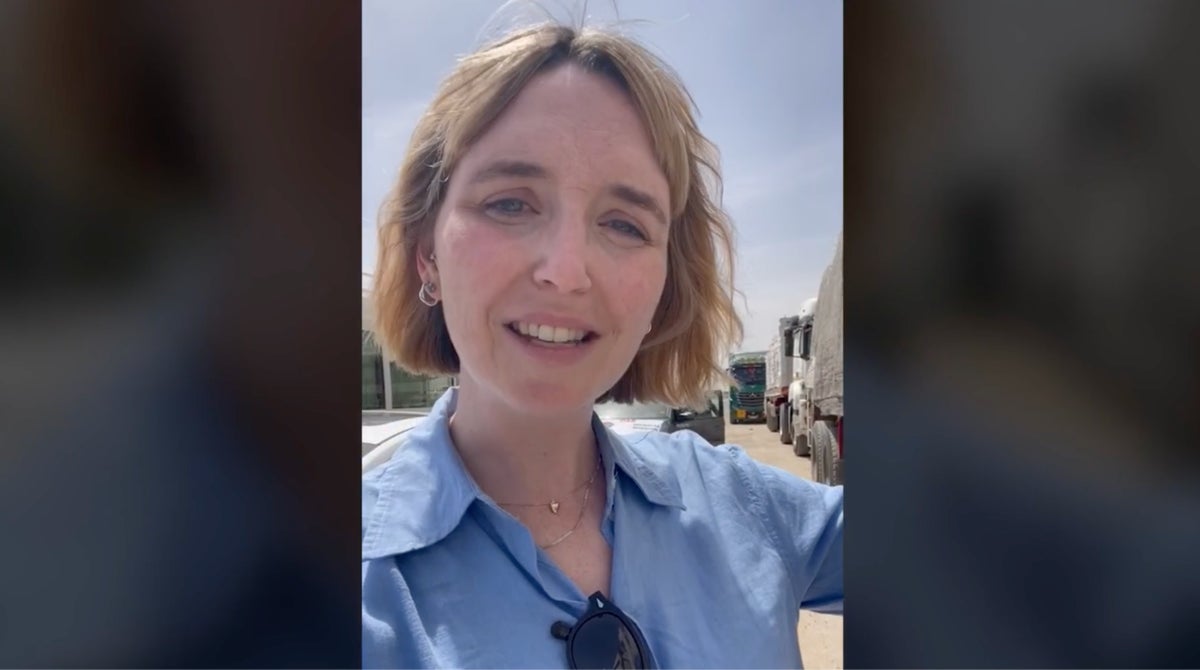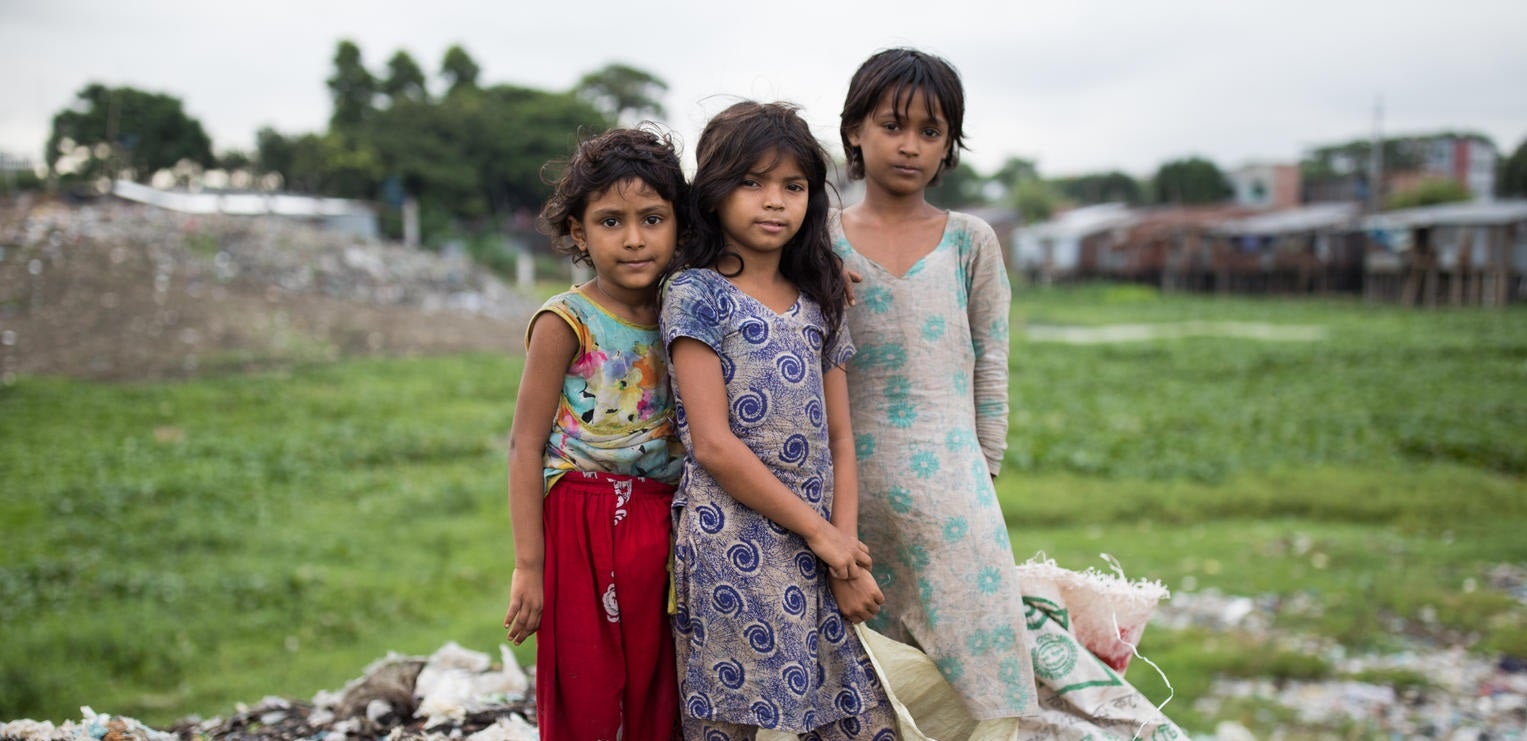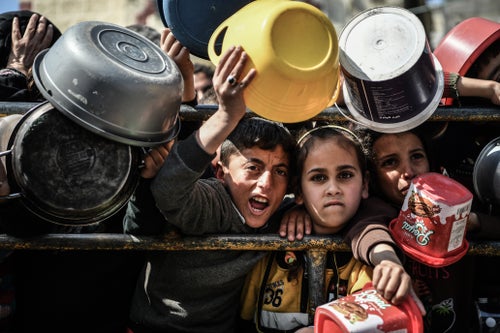Since the war in Gaza escalated in October 2023, every child and their family has been pushed to the brink. The fate of hostages, including two children, are unknown and children, who make up roughly half the population of Gaza, are being disproportionately impacted - over 13,800 children have been killed, thousands more injured, and over 17,000 children are unaccompanied or separated. Devastatingly, the numbers are probably much higher.
The Gaza Strip has become a living hell. Every child has been robbed of their childhood and has been exposed to deeply distressing events and trauma marked by widespread destruction, relentless attacks, displacement, and severe shortages of essential necessities such as food, water, and medicine. And yet, there is no end in sight.
Children, especially in the north of Gaza, are now dying of starvation and dehydration. They are being deprived of life’s basic essentials as the region teeters on the edge of famine.

UNICEF Spokesperson James Elder gives an update on the ground in Gaza
Famine is imminent as the entire population of Gaza faces severe food shortages
The Integrated Food Security Phase Classification (IPC), which was established by the United Nations Food and Agriculture Organisation, released a report on 18 March 2024, stating that famine is imminent in the northern parts of Gaza and that a risk of famine now exists across the whole of Gaza. This situation has deteriorated significantly since the IPC and UN agencies previously warned of the risk of famine, back in December 2023, stating an immediate ceasefire was urgently needed.
Now, the entire population is facing high levels of food insecurity, with children dying of starvation and dehydration in the north of Gaza, where humanitarian aid has been the most restricted and, at times, completely cut off.

Seba, the mother of two young girls, Israa and Hanan, owned a beautiful house filled with flowers and crops in the south of the Gaza Strip. At the start of the war, Seba was forced to leave her home due to the bombings, destruction, and the scarcity of water and food supplies in the area where she lived.
Walking for long hours, Seba arrived at a school. "I went to the school and stayed there for two weeks, but the overcrowding and lack of hygiene posed a lot of risks to my daughters. They constantly suffer from diarrhoea and fever repeatedly," Seba explained.
"At that time, I faced many challenges to provide medicine, food, and clean water," said Seba. "So, I decided to leave the school and live inside a tent.”
Seba built the tent for her family from wood and plastic covers. "The tent doesn't protect us from the cold, but it's better than staying in the crowded shelters," she said.
What is famine, and how can it be prevented?
Famine occurs when there are extreme food shortages, and people lack access to clean, safe water. It is a race against time, as children and their families are not only extremely hungry but can also become very sick because their bodies are not getting the critical nutrients they need to survive and fight off other life-threatening diseases.
Famines are human-made crises, so we have the power to prevent and stop them. It requires both early action and interventions that go beyond delivering food aid. It also requires access to clean, safe water, health care and government interventions.

"I spend over five hours in line in order to provide one meal a day for my family. It is arduous and tiring, but I have to do it every day without getting tired or bored, otherwise we will not eat anything."
Why is there not enough humanitarian aid getting into Gaza?
Before the war, around 500 trucks with commercial goods and humanitarian aid were entering Gaza, now, only a trickle of lifesaving supplies has been allowed in, which is nowhere near enough for the children who have already survived immense atrocities. Sitting across the border, only minutes away, are hundreds of trucks with humanitarian aid lined up, packed with supplies, waiting to get in.
UNICEF Spokesperson Tess Ingram explains why not enough supplies are getting into Gaza.

UNICEF Spokesperson Tess Ingram calls for more aid trucks to be let into Gaza
How UNICEF is helping the children of Gaza
Even before the current crisis, UNICEF has been on the ground, delivering lifesaving support to children in Gaza for over four decades. Since the latest escalation, UNICEF has continued to move lifesaving supplies into Gaza and across the strip wherever logistically possible due to border restrictions, the widescale destruction of the infrastructure and the threat posed by unexploded ordnances.
Despite the challenging humanitarian and security situation, UNICEF and partners will remain in the Gaza to provide immediate lifesaving humanitarian support, including delivering medical supplies, ready-to-eat food, tents, blankets, hygiene kits, bottled water, fuel for the operation of critical Water, Hygiene, and Sanitation (WASH) facilities, water treatment essentials, and mental health and psychosocial support. UNICEF efforts also encompass closely monitoring grave child rights violations and providing child-sensitive humanitarian cash assistance.
An immediate humanitarian ceasefire provides the best chance to save lives, end suffering and enable the urgent delivery of lifesaving aid.

Children of Gaza Crisis
Amid unrelenting violence, children in Gaza are starving to death. Support UNICEF’s ongoing efforts. Donate today.
Related articles
Stay up-to-date on UNICEF's work in Australia and around the world
















